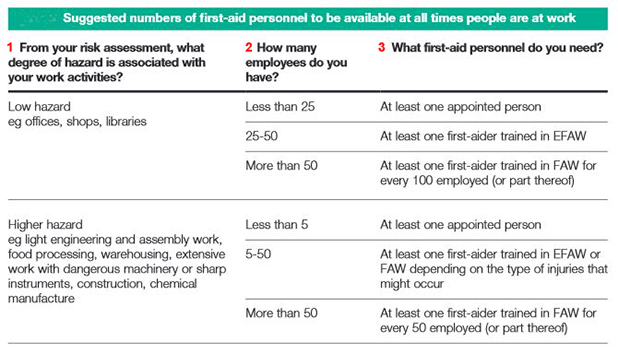Health and Safety Requirements for Care Homes – Care homes differ from other workplaces because they are not only a place of work but they are also a home. While meeting legal duties and providing a safe and healthy environment, they need to be maintained as pleasant places to live.
Managing Health and Safety Requirements for Care Homes
 Good standards of safety in the workplace do not happen of their own accord. Safe systems of work have to be devised and implemented, staff have to be trained and equipment needs to be purchased and maintained.
Good standards of safety in the workplace do not happen of their own accord. Safe systems of work have to be devised and implemented, staff have to be trained and equipment needs to be purchased and maintained.
In other words, Health and Safety requirements for care homes has to be managed as much as any other part of the business. High-performing companies recognise that managing health and safety is not only a legal duty but makes good economic sense.
Employers can ill afford the losses resulting from accidents and work-related ill health. There are less obvious losses including hiring of temporary/permanent staff, lost time for management in resolving issues, higher insurance premiums, and staff training, as well as the pain and suffering of the employee(s) involved.
Employers must:
- Assess risks to staff and visitors
- Make appropriate health and safety arrangements, which must be written down if five or more people are employed
- Appoint competent persons to help them comply with health and safety law
- Establish procedures to deal with imminent danger
- Co-operate and co-ordinate with other employers and self-employed people who share the workplace; and
- Provide information instruction and training
Employees must:
- Work in accordance with training and instruction given by their employer; and
- Report situations which they believe to be unsafe
Risk assessment
Health and Safety Requirements for Care Homes – The Management of Health and Safety at Work Regulations 1999 also requires employers to assess the health and safety risks to both employees and others affected by the business. You should concentrate on the significant risks, not on minor ones. The assessment needs to be suitable and sufficient, not perfect.
A risk assessment involves carrying out a careful examination of what could cause harm to people and considering whether you have done enough to prevent harm, or whether more action needs to be taken. The aim is to make sure that no one is hurt or becomes ill from your work activities.
Definitions
Risk: the chance, high or low, that somebody will be harmed by the hazard.
Record your findings
If you have five or more employees then you need to record the significant findings (hazards and conclusions) of your risk assessments and tell your staff about them. An example of a significant finding might be ‘upper-floor windows restricted and checked every month’.
You are required to appoint one or more ‘competent persons’ to assist you in complying with health and safety law. You must ensure that these people have enough time and resources to fulfil their responsibilities.
A competent person is someone who has sufficient training and experience or knowledge (an understanding of relevant statutory requirements and an appreciation of the hazards involved) to do the required job.
Training
You must make sure that employees have suitable information, instruction and training in order to do the job safely. Training is an important way of achieving health and safety compliance and helps to convert information into safe working practices.

All employees, including management, need to be appropriately trained but particular attention needs to be paid to:
- The induction and training of new workers, young workers, part-time and nightshift workers
- Those given specific responsibilities in the health and safety policy
- Employees who transfer, take on new responsibilities or deputise, or staff who return to work after extended absence; and
- Changes in equipment and systems of work or procedures.
The risk assessment should identify where specific training is required, such as dealing with aggressive people. The competence of staff should be monitored. Refresher or update training may be needed to ensure that staff maintain their skills.
Reporting of incidents
The Reporting of Injuries, Diseases and Dangerous Occurrences Regulations 1995 (RIDDOR) require employers and others to report certain types of injury, occupational ill health and dangerous occurrences that arise out of or in connection with work. Health and Safety Requirements for Care Homes
How and when to report an incident
Reporting an incident does not suggest in any way that you accept responsibility for the event or that an offence has been committed; it is simply informing the enforcing authority that an incident has occurred at your premises. Failure to report a reportable injury, dangerous occurrence or disease described in RIDDOR within the set time (see next paragraph) is a criminal offence and may result in prosecution.

You must report fatal accidents, accidents resulting in major injuries, accidents to people who are not at work and dangerous occurrences to the Incident Contact Centre (ICC) at the following address without delay:
Incident Contact Centre
Caerphilly Business Park
Caerphilly
CF83 3GG
Telephone: 0845 300 9923
Fax: 0845 300 9924
How and when to report an incident – RIDDOR
First Aid
Health and Safety Requirements for Care Homes – Under the Health and Safety (First-Aid) Regulations 1981, workplaces should have first-aid provision. The extent it should take depends on various factors, including the nature and degree of the hazards at work, whether there is shift working, what medical services are available, and the number of employees. The HSE book First aid at work contains an Approved Code of Practice and guidance to help employers meet their obligations.

The minimum requirement for any workplace is that when people are at work (including nightshifts), there should be at least one appointed person who will take charge in an emergency situation. This includes being responsible for calling an ambulance and looking after the first-aid equipment, for example restocking the first-aid box. An appointed person should be available at all times while people are working on-site; this may mean appointing more than one. It is recommended that an appointed person should have received emergency first-aid training.
Although the Regulations only refer to facilities for employees, it is recommended that you extend these to cover service users and visitors. You may wish to consider providing qualified first-aiders. They can fulfil the duties of an appointed person. A first-aider is someone who has undergone a training course in administering first aid at work and holds a current first aid at work certificate. The training course must be approved by HSE. First-aiders should receive refresher training every three years.
There are no hard and fast rules on the number of appointed persons/first-aiders you should have, it depends on the circumstances of your business.
The table below suggests some numbers but consideration should also be given to shift work.

Hazardous substances
Health and Safety Requirements for Care Homes – The Control of Substances Hazardous to Health Regulations 2002 (COSHH) require employers to prevent or control exposure to hazardous substances (including chemicals, dust, fumes, micro-organisms) at work. This duty applies to employees, service users, visitors etc.

COSHH – key duties
Employers must:
- Assess the risk to their employees and others from exposure to hazardous substances at work
- Introduce appropriate precautions to prevent or control the risk that has been identified
- Ensure that the precautions are used, equipment is properly maintained and procedures are followed
- Where necessary, monitor the exposure of the employees and undertake health surveillance and;
- Inform, instruct and train employees about the risks and precautions to be taken
Hazardous substances used in care homes include some cleaning materials, disinfectants and micro-organisms (associated with clinical waste or soiled laundry).
Employers must assess the health risk faced by their employees, service users and visitors, and decide on the action they need to take to prevent or control exposure to hazardous substances. The results of the assessment should be made known to the employees or their representative.
Control of infection
Control of infection is an important consideration throughout the care home environment. There may be the potential for exposure to a range of human pathogens with the consequent risk of harm or disease. All homes should have an infection control policy that addresses such issues as:
- Education and training of staff in infection control issues
- Protocols on handwashing
- Service user isolation
- Aseptic procedures
- Disinfection and decontamination including domestic cleaning
- Ill-health reporting and recording
- Monitoring, surveillance and audit
- Prevention of exposure to blood-borne viruses, including prevention of sharps injuries and immunisation policies for at risk staff
- Use of personal protective equipment including powder-free latex gloves
- Generation, collection and disposal of clinical waste.
Moving and handling
The Manual Handling Operations Regulations 1992 were introduced to reduce the numbers of injuries from moving and handling throughout industry including the care sector. The term ‘manual handling’ includes lifting, moving, putting down, pushing, pulling and carrying by hand or bodily force of goods, equipment and people.

The Manual Handling Regulations – key duties
The employer must:
- Avoid moving and handling where there is a risk of staff being injured, as far as reasonably practicable
- Assess the risk of injury from moving and handling that cannot be avoided
- Reduce the risk of injury from moving and handling, as far as reasonably practicable
Employees must:
Make full and proper use of the systems of work provided
Making an assessment
It should be possible to complete the majority of assessments in-house as you know your business better than anyone. Simple tasks only require simple assessments, eg dividing large boxes of stores into smaller loads. More complex tasks will require detailed assessment and will need to be recorded. To save effort you can group common tasks together and then carry out a generic assessment. The assessments should consider the task, the load, the working environment and the individual’s capabilities.
Health and Safety Policy Statements
Planning for health and safety in a systematic way is the key to achieving standards, reducing accidents and helping to save operational costs. The company health and safety policy should be a document that helps you realise your plans. It sets out who does what, when and where for health and safety.

Statement of general policy
When preparing the health and safety policy, begin by setting out your general aims (the legal responsibility placed upon the company to provide and maintain healthy and safe conditions for all employees and other people who might be affected). Undertake, for example, to:
- Provide enough resources for effective implementation of the policy
- Plan systematically
- Revise and develop the policy (it may be helpful to review the policies at regular intervals, eg annually)
- Secure the compliance of all employees by the means of instruction, information and training
It will help to demonstrate the company’s level of commitment if the statement is signed and dated by the managing director or partner.
Health and Safety Requirements for Care Homes – training courses
Please use the links below to find the right training for you:
For a more detailed guide on ‘Health and Safety for care homes’ please download the Health and Safety Executive (HSE) guide Health and Safety for care homes.
For more information on Health and Safety Requirements for Care Homes and your training requirements please email us. Or alternatively, call us on 0151 515 0416 and speak with one of our Training Consultants.
